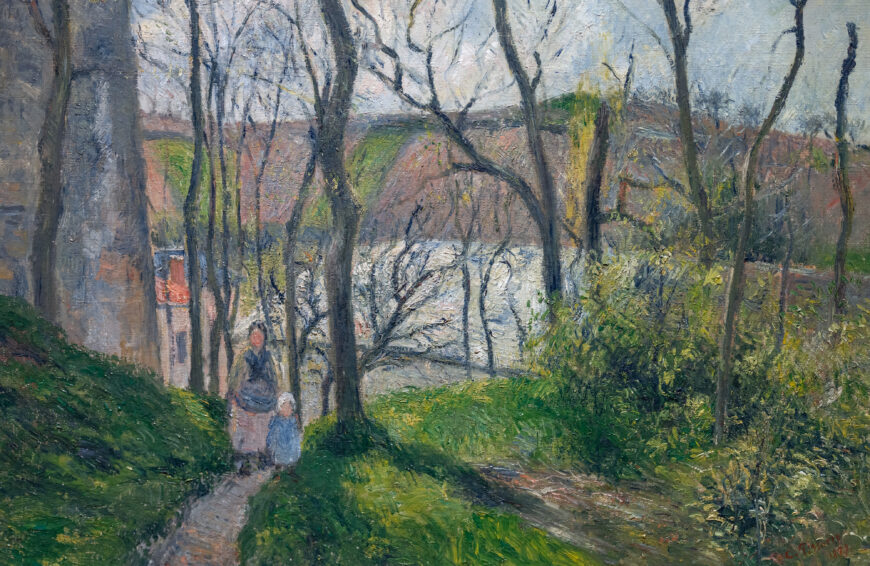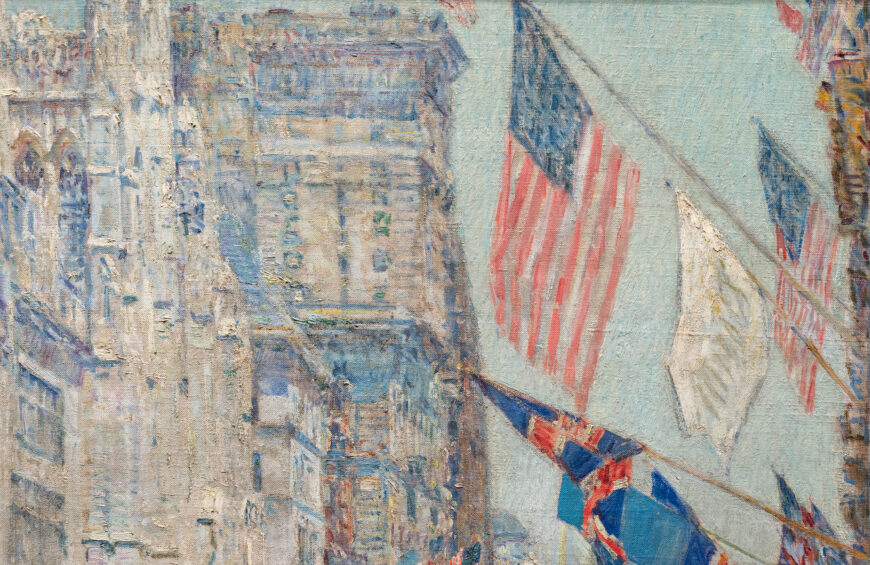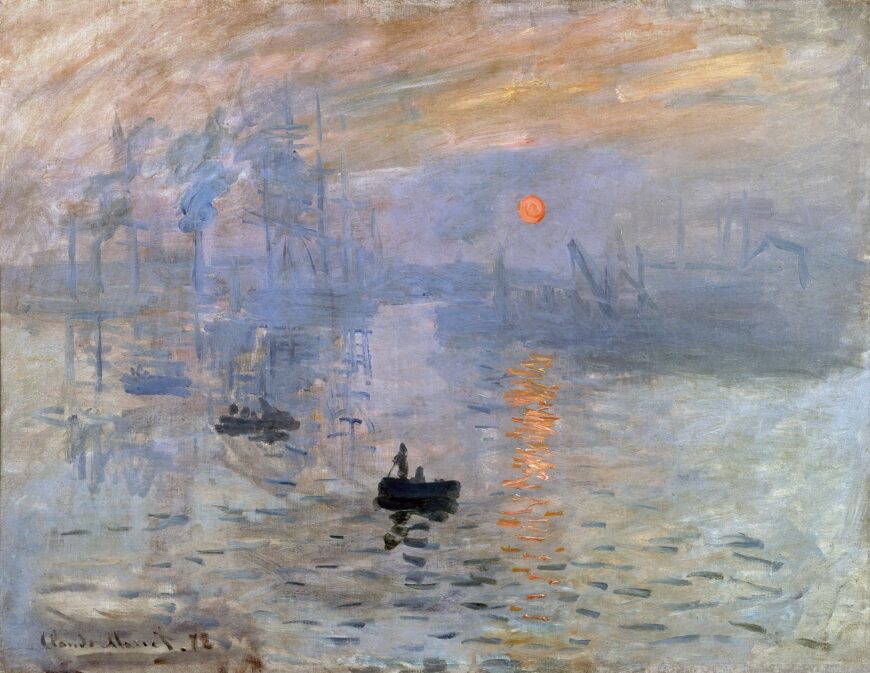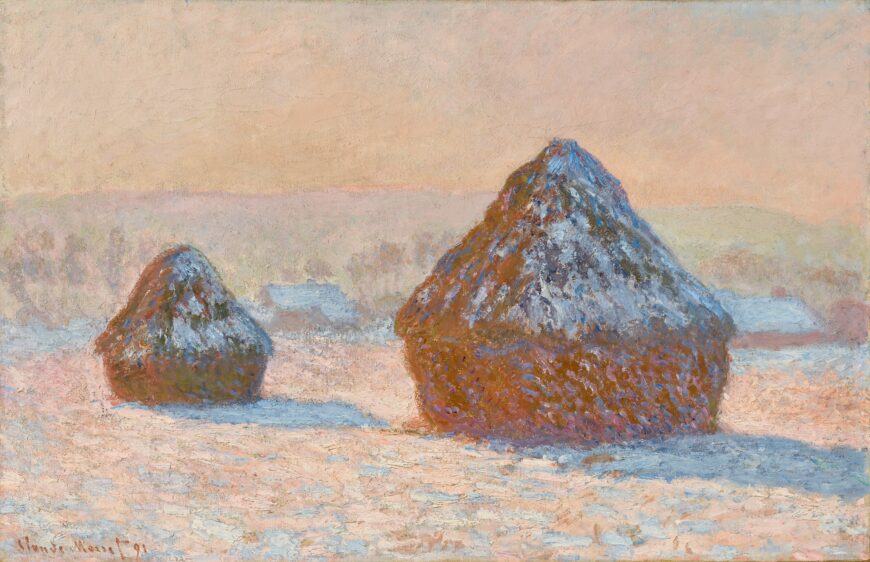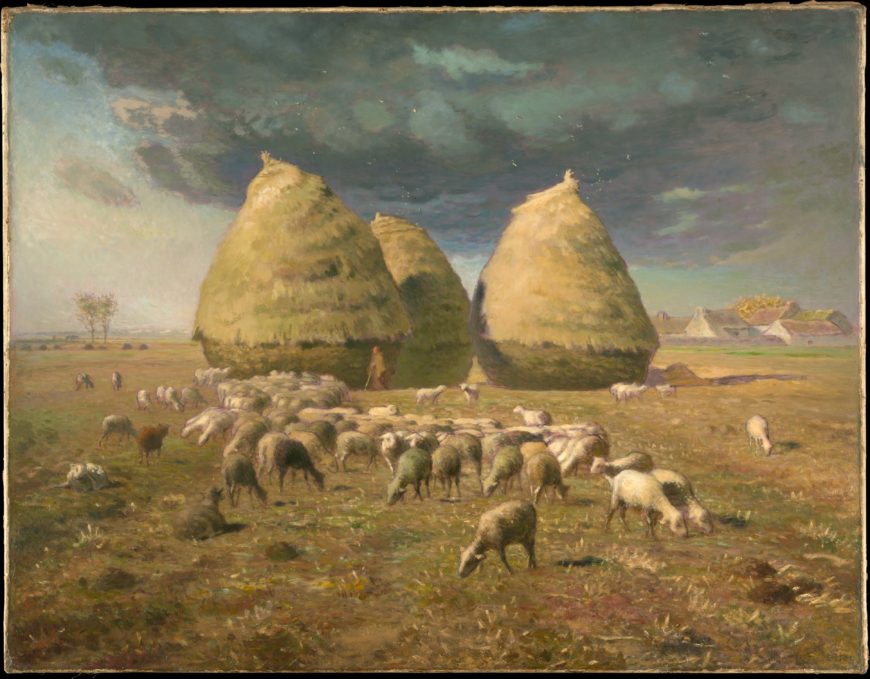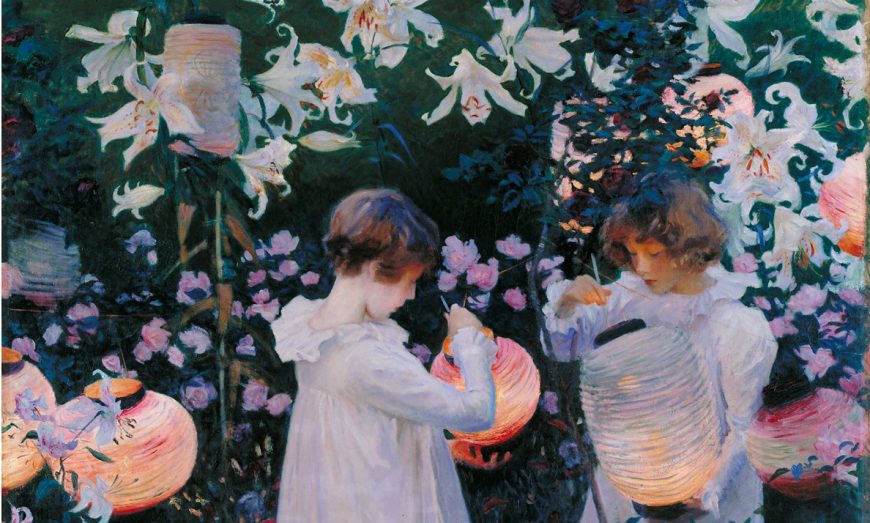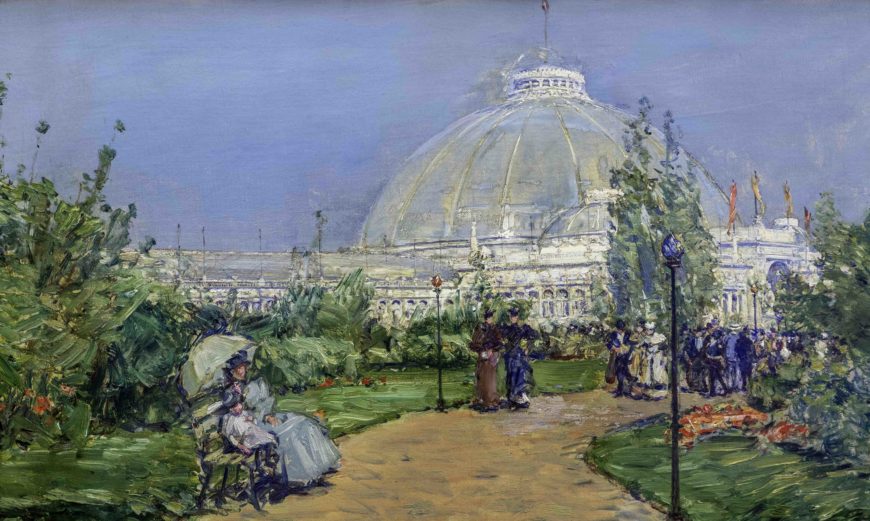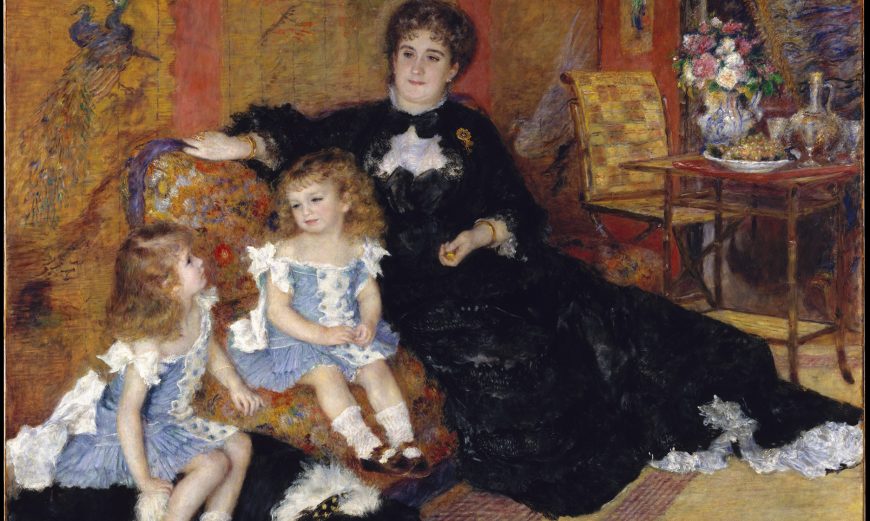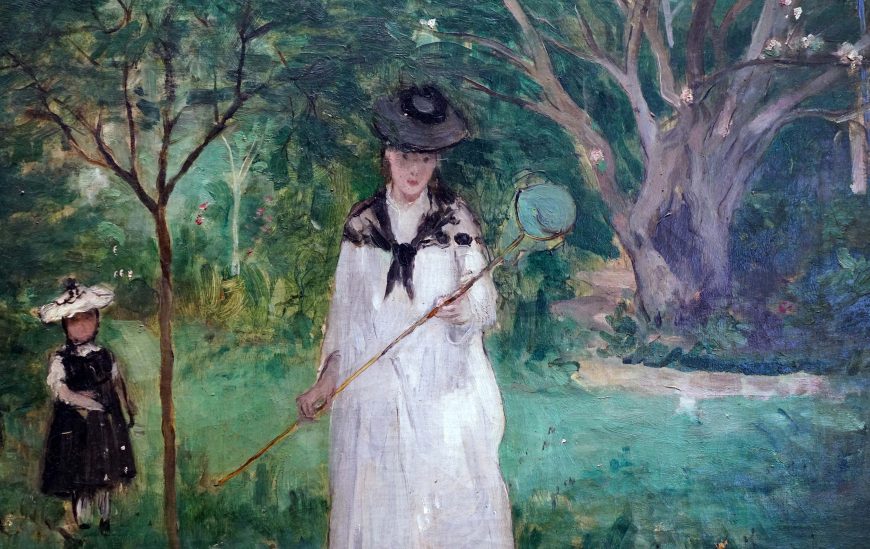Auguste Renoir, The Large Bathers, 1884-87, oil on canvas, 46-3/8 x 67-1/4″ / 117.8 x 170.8 cm (Philadelphia Museum of Art)
[0:00] [music]
Dr. Beth Harris: [0:00] A lot of people know about Impressionism, but very few people know about the crisis of Impressionism, and this painting is a great example of that crisis.
Dr. Steven Zucker: [0:15] We’re in the Philadelphia Art Museum, looking at Auguste Renoir’s “The Large Bathers.” This is a painting that is not Impressionism — you’re absolutely right — that really, in a sense, rejects Impressionism.
[0:25] Here we have one of the leaders of the Impressionist movement just a decade later turning his back and saying, “No. I want to create classical nudes.”
Dr. Harris: [0:34] Exactly. Part of the impetus for this was seeing Seurat’s painting of the “Bathers at Asnières” and “La Grande Jatte,” both paintings which took Impressionist subject matter, leisure in the city, but made of that subject something really timeless and gave them a sense of permanence, and a sense of being composed and thought out, which were things you couldn’t say about Impressionist paintings. Impressionist paintings look like they were done quickly and on the spot.
Dr. Zucker: [1:03] In fact, Renoir made numerous studies for this painting, some large-scale drawings, and spent three years preparing this canvas. The other influence that’s so important to keep in mind is that the artist had finally gotten to Italy. He’d gone to Rome, he’d seen Rafael, he had seen classical art.
[1:17] In fact, he went to Pompeii and had seen ancient fresco, and unlike Impressionism, which is seeking the fleeting, here he’s reversed himself, and now he’s seeking to create a painting that is an expression of eternal beauty.
Dr. Harris: [1:29] That’s right, this is the crisis of Impressionism, this turning away from the fleeting moment that’s caught rather quickly with sketchy brushstrokes, and a desire to paint something that is more timeless and more permanent and more connected to the traditions of art.
Dr. Zucker: [1:45] But the result is a very curious painting. On one hand. you’ve got this very tight handling of these figures. You can really see an emphasis now on contour, but it’s been placed in this landscape that is absolutely modern, very much a product of the 19th century.
Dr. Harris: [1:59] Of Impressionism. It looks like an Impressionist landscape in the background.
Dr. Zucker: [2:01] It really does. And so this painting is kind of a collage of styles and of intentions.
Dr. Harris: [2:06] Yeah, this is truly a crisis. First of all, you have the subject of the nude, which is an important subject in art history, especially since the Renaissance, and the question of how do you create a modern nude is something that Baudelaire asked in his famous essay “The Painter of Modern Life.”
[2:22] These don’t look like classical figures — if you look at their faces they look like Parisian women — so we know that we’re not looking at a Renaissance painting, but it does end up being a clash of styles.
Dr. Zucker: [2:34] Renoir is rejecting not only his own Impressionism, he’s rejecting the pathway that had been offered by Manet 20 years earlier in paintings like “Olympia” or in “Le Déjeuner sur l’herbe,” the incongruity of the nude in the modern world.
Dr. Harris: [2:48] Manet, when he gives us “Olympia,” gives us an image of a nude where we feel the tension of that tradition coming into the modern world. We’re aware of that problem, and that Renoir is trying to erase that problem.
Dr. Zucker: [3:02] I think he is. I think he’s trying to reclaim young women flitting about in a parklike setting, which is an absurdity, and yet he’s trying to suggest that within the veil of art, this is somehow a reasonable proposition.
Dr. Harris: [3:15] What this highlights for me is the importance of form. If you think about Cézanne painting the subject matter at the end of his life in his “Great Bather” series, or if you think about Degas and other artists of that generation picking up on this traditional subject of bathers, the way that they apply paint is radically modern.
[3:36] The problem with this painting, of course, is that Renoir is really retreating into the past. It’s a profoundly conservative painting in the way that it’s painted.
Dr. Zucker: [3:45] But it does speak to the tensions between tradition and modernity that were so present at the end of the 19th century. This painting is absolutely a product of its day.
Dr. Harris: [3:55] There’s a feeling that Impressionism went too far, leaving behind all of the seriousness of art history to embrace the fleeting and the momentary.
Dr. Zucker: [4:06] If we look at this canvas, despite all of the weighty issues that we’re discussing, these are figures that are meant to, in a sense, speak to sensual frivolity, that recalls the 18th century, that recalls the late Rococo.
[4:16] You might think of Boucher, although this is much more tightly rendered. It’s a sort of odd combination of the subject of the 18th century, with references to the style of the 16th century, and perhaps even of the ancient world, and it is really this funny collage that speaks to the 19th century’s ability to harvest ideas and styles from history and to bring them into the modern world.
[4:40] [music]


